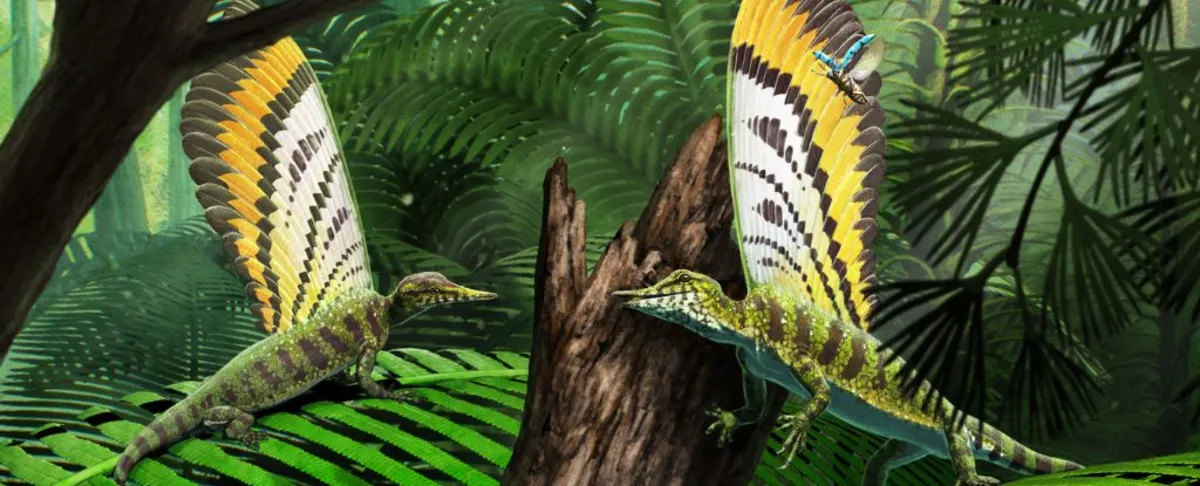
A remarkable discovery in the field of paleontology has unveiled a bizarre reptile that once thrived in the Triassic treetops, showcasing an extravagant crest unlike anything seen before. This extinct creature, known as Mirasaura grauvogeli, boasts fossils that are approximately 247 million years old, immediately captivating the interest of scientists. The impressive appendage on its back initially resembles a frill of overlapping feathers, yet it predates the earliest fossilized feathers, challenging existing notions about the evolution of complex appendages in reptiles.
The distinct structure of Mirasaura's crest is noteworthy because it lacks both the branching typical of plumes and the bony spines characteristic of later dinosaurs, such as Spinosaurus. According to paleontologist Stephan Spiekman from the Stuttgart State Museum of Natural History, this discovery signifies the emergence of a new type of complex appendage in reptiles, one that had not been documented before. "Prior to our discovery, complex outgrowths from the skin were largely restricted to mammals and birds," Spiekman remarked, emphasizing the significance of this find.
The study indicates that long before the evolution of feathers in dinosaurs, early reptiles like Mirasaura were already beginning to develop a genetic toolkit for complex appendages. Spiekman and his colleagues referred to these unique dorsal crests as skin outgrowths, though they do not closely resemble typical reptile skin. The researchers suspect that these outgrowths might be composed of keratin, the same protein that forms nails, hairs, scales, and claws. However, confirming this hypothesis will necessitate further analysis.
In total, the research team examined over 80 fossils of the outgrowths, generously donated to the Stuttgart museum. While most specimens had lost their corresponding skeletons, one fossil was found to contain the bird-like skull of this small, ancient reptile. The name Mirasaura, which translates to "wonderous reptile," aptly reflects the extraordinary features of this creature.
Mirasaura is classified as a drepanosaur, a type of small, early reptile known for its tree-dwelling lifestyle and insect-hunting capabilities, aided by its velociraptor-like claws. Although the exact function of its dorsal appendage remains unknown, it is unlikely to have served purposes related to flight or insulation. Instead, it may have played a role in visual communication, potentially aiding in predator deterrence or intraspecies signaling.
Interestingly, the best-preserved fossils of Mirasaura contained traces of melanosomes, which are organelles found within pigment cells. The geometry of these melanosomes aligns with those that color feathers, differentiating them from those found in reptile skin or mammal hair. This finding further illustrates the complexity of evolutionary pathways leading to the development of intricate structures.
Spiekman concludes that Mirasaura serves as a testament to the surprising nature of evolution and the wealth of knowledge still to be uncovered through paleontology. "We already knew from genetics and developmental biology that much of the pathway to form feathers, hairs, and scales is shared among mammals, reptiles, and birds. Now, with Mirasaura, we can affirm that such complex structures indeed grew in other animals too," he stated. This discovery challenges the simplistic view of reptiles as merely scaly creatures, highlighting their evolutionary significance and complexity.